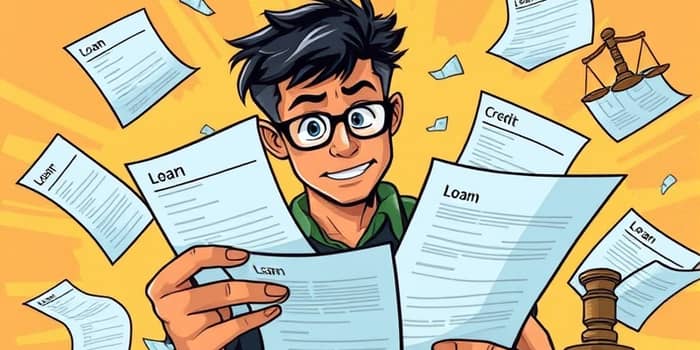Every year, thousands of borrowers discover mistakes on their student loan accounts, leading to unnecessary stress and financial setbacks. Identifying and correcting these errors promptly can restore your credit standing and give you peace of mind.
Understanding Common Student Loan Errors
Before you begin the dispute process, you need to know what errors typically occur. Loan servicers and credit bureaus can make mistakes that may hurt your credit score or lead to wrongful delinquency reports.
- incorrect account status reported leading to false delinquencies
- Payment history mistakes such as missed payments marked incorrectly
- Duplicate loans or incorrect due dates on credit report
- Mistaken identity, where loans belong to someone else entirely
Step-by-Step Guide to Disputing Student Loan Errors
Disputing an error involves several clear steps. Follow each one carefully to ensure the fastest possible resolution.
Step 1: Identify the Error
Review your loan statements, NSLDS report for federal loans, and credit reports from Equifax, Experian, and TransUnion. Compare dates, balances, and statuses to find discrepancies.
Step 2: Gather Necessary Documentation
Collect all evidence that supports your case. Having the right paperwork at hand strengthens your position and accelerates the dispute process.
- Proof of payments (bank statements, canceled checks)
- Loan agreements, monthly statements
- Previous correspondence with your servicer or lender
- Official records, such as court orders or disability documentation
Step 3: Contact Your Loan Servicer or Lender
For federal loans, call or write your servicer directly. If you have private loans, reach out to your lender. Always maintain thorough records of all communications, noting dates, names, and discussion points.
Explain the error clearly and ask for immediate correction. Many servicers can resolve simple issues within days if you provide strong documentation.
Step 4: Dispute Errors on Your Credit Report
If the error appears on a credit bureau report, file a dispute with that bureau—Equifax, Experian, or TransUnion—online, by phone, or by mail. Online methods are usually the fastest.
Your dispute package should include:
- Your name, address, and loan account numbers
- A clear description of the error and the correction you seek
- Copies of supporting documents (not originals)
Credit bureaus generally investigate within 30 days and provide a written response.
Step 5: Write a Formal Dispute Letter
Although optional, a well-crafted letter can be highly effective. Include your personal information, a detailed description of the error, and reference any prior communications.
Be specific about dates, amounts, and how the mistake occurred. Cite relevant laws, such as the Fair Credit Reporting Act, and request a written response within 30 days. Attach copies of proofs and sign the letter before sending.
Step 6: Follow Up
Monitor the status of your dispute through credit bureau online tools or by contacting your servicer. If you haven’t received a satisfactory response by the deadline, elevate the issue to the Consumer Financial Protection Bureau (CFPB) or the Federal Student Aid Ombudsman Group.
Escalating can prompt faster action, especially when errors remain unresolved after initial disputes.
Essential Tips and Common Pitfalls
Prevent mistakes and streamline future disputes by adopting these best practices:
- Regularly check your NSLDS report and credit files to catch errors early
- comprehensive documentation and clear communication ensure stronger cases
- Avoid missing IDR paperwork deadlines to prevent misreported statuses
- Keep a consolidated file of all loan-related documents for quick reference
Key Resources and Support
Several federal agencies offer help when disputes become complex or unresolved:
If you face servicer unresponsiveness or incomplete corrections, filing a complaint with the CFPB can prompt a formal review.
Conclusion
Discovering an error on your student loan account can be stressful, but with a structured approach, you can reclaim control and protect your credit. Early action and meticulous record-keeping are your greatest allies.
By following these steps—identifying errors, gathering proof, contacting servicers, filing disputes, and seeking federal help when needed—you’ll be equipped to navigate complex loan servicing systems effectively and secure a fair resolution. Take charge today and ensure your student loan records truly reflect your responsible repayment history.
References
- https://studentaid.gov/feedback-ombudsman/disputes/common-issues
- https://studentaid.gov/feedback-ombudsman/disputes
- https://upsolve.org/learn/dispute-student-loan-credit-report/
- https://www.usa.gov/student-loan-problems
- https://www.tateesq.com/learn/student-loan-dispute-letter
- https://studentloanadvice.com/13-common-student-loan-mistakes/
- https://www.savingforcollege.com/article/how-to-complain-about-your-student-loans
- https://www.experian.com/blogs/ask-experian/how-can-i-remove-student-loans-from-my-credit-report/










